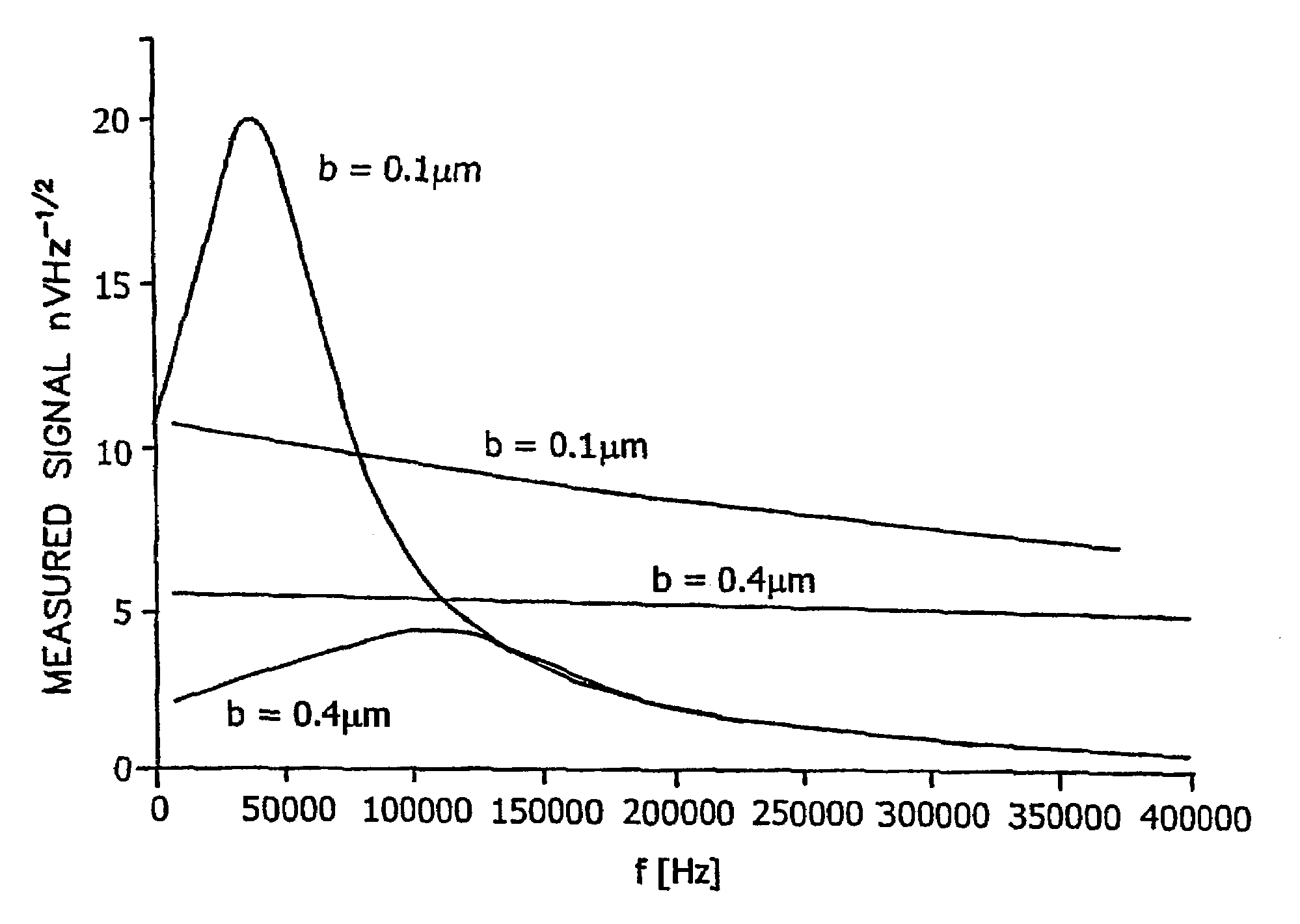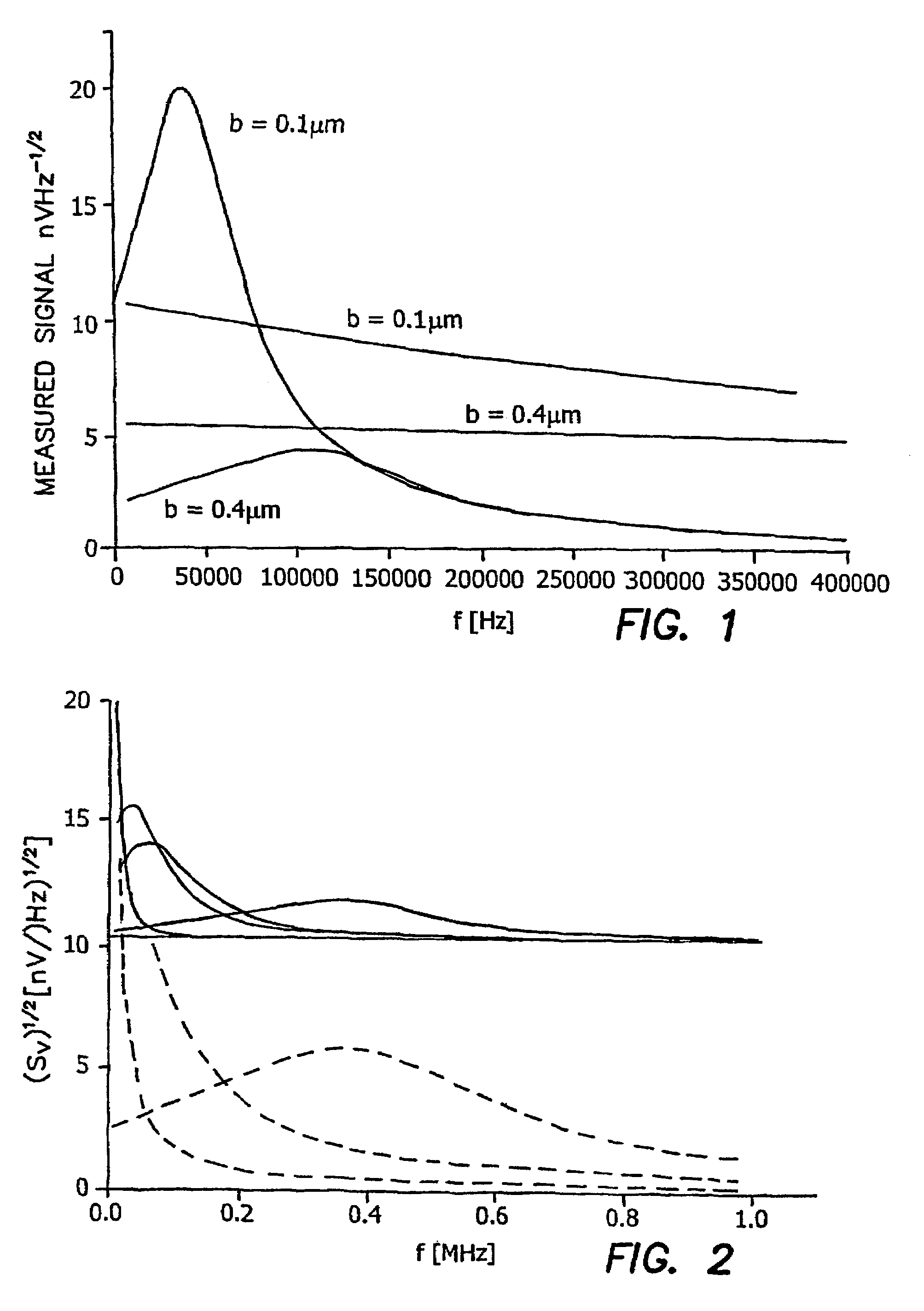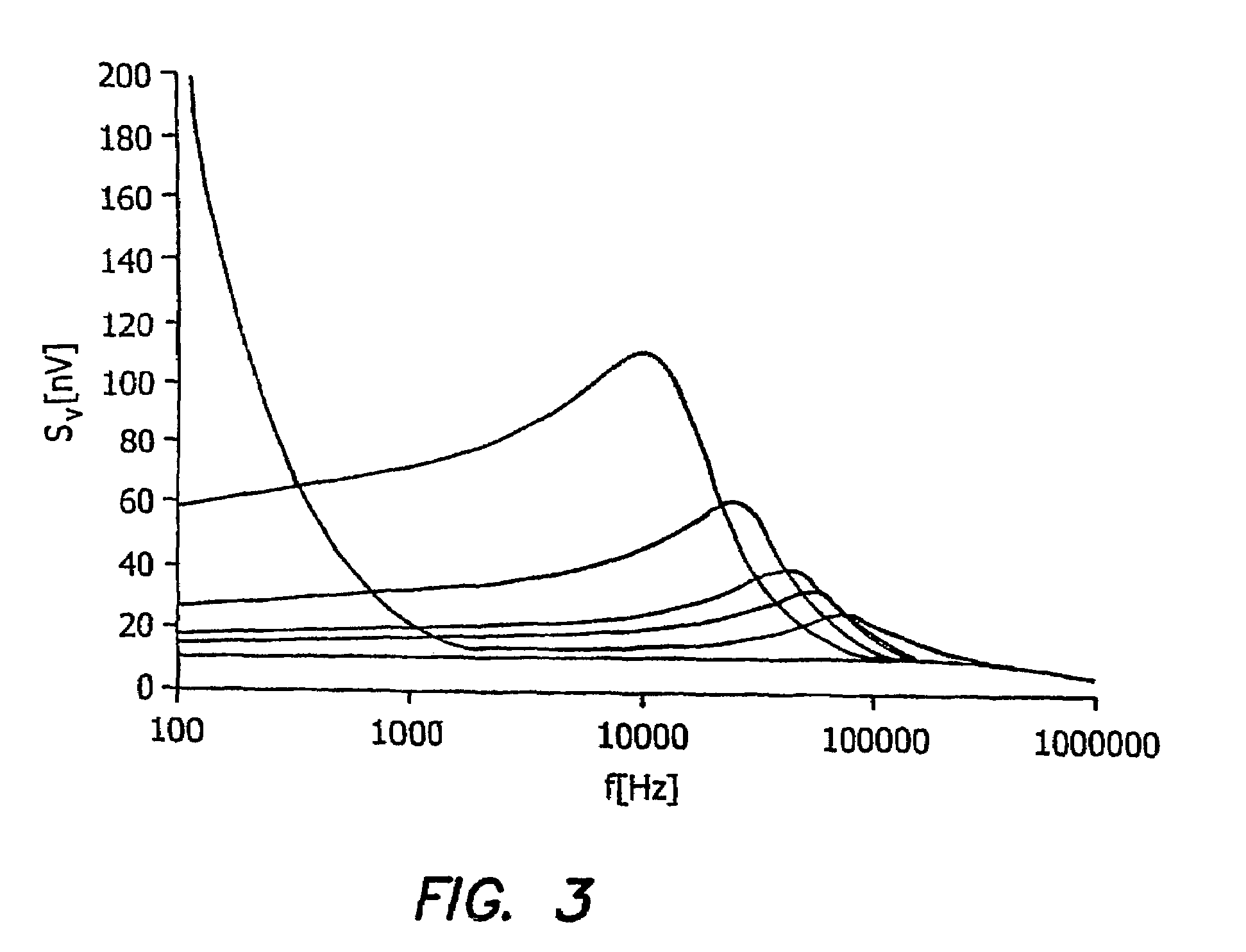Dynamics bionems sensors and arrays of bionems sensor immersed in fluids
a bionems sensor and dynamic technology, applied in the direction of material analysis using wave/particle radiation, instruments, nuclear engineering, etc., can solve the problems of inability to detect resonance, inconvenient application, and difficulty in harvesting potential, so as to reduce width and reduce width , the effect of reducing background johnson nois
- Summary
- Abstract
- Description
- Claims
- Application Information
AI Technical Summary
Benefits of technology
Problems solved by technology
Method used
Image
Examples
Embodiment Construction
[0065]The illustrated embodiment is directed to the constraints upon the level of current bias that can be applied to a piezoresistive BioNEMS device in fluid. The force sensitivity attainable clearly hinges on the maximum level of current bias that is tolerable, given that the responsivity is proportional to bias current, R=I G. The largest practical level of bias current is determined by the maximum temperature rise in the BioNEMS which is deemed acceptable.
[0066]For the purposes of illustration the bioNEMS transducer or cantilever 10 shown in perspective view in the microphotograph FIG. 12a and in the top plan view diagram of FIG. 12b shall be assumed, which can be analogized as having the form of “a diving board with a cutout at its base”. However, it is to be expressly understood that the geometry of the transducer 10 is to be entirely general and includes any type cantilever, doubly clamped beam, paddle or any other submicron oscillating structure. The geometry of the device 1...
PUM
| Property | Measurement | Unit |
|---|---|---|
| forces | aaaaa | aaaaa |
| forces | aaaaa | aaaaa |
| size | aaaaa | aaaaa |
Abstract
Description
Claims
Application Information
 Login to View More
Login to View More - R&D
- Intellectual Property
- Life Sciences
- Materials
- Tech Scout
- Unparalleled Data Quality
- Higher Quality Content
- 60% Fewer Hallucinations
Browse by: Latest US Patents, China's latest patents, Technical Efficacy Thesaurus, Application Domain, Technology Topic, Popular Technical Reports.
© 2025 PatSnap. All rights reserved.Legal|Privacy policy|Modern Slavery Act Transparency Statement|Sitemap|About US| Contact US: help@patsnap.com



